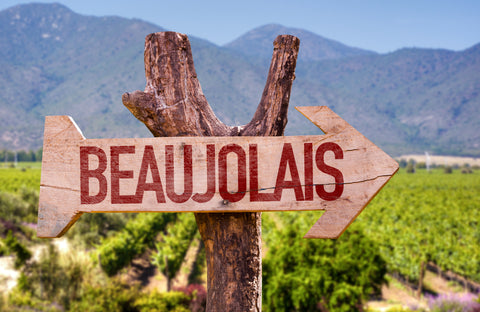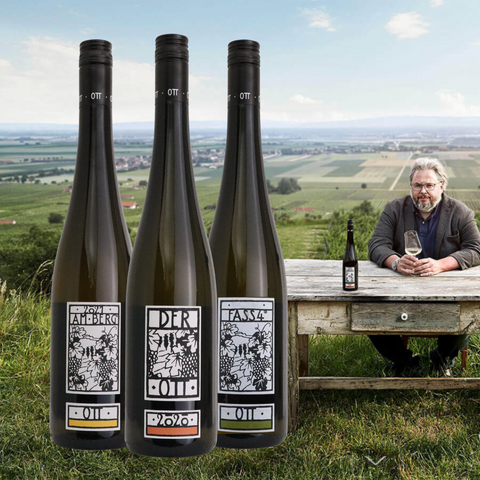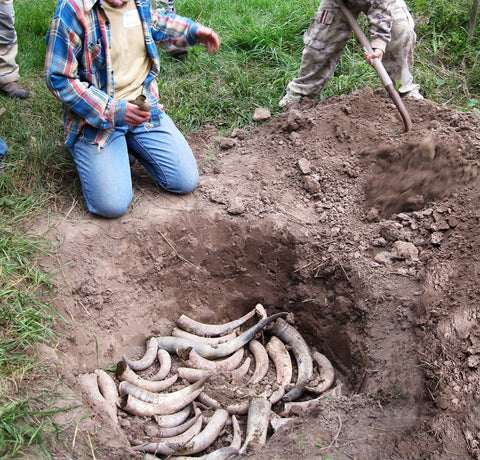Beaujolais is located South of Burgundy. The less-known region started to put their name on the map in the late 1980’s with Beaujolais Noiveau which is celebrated today (3rd Thursday of November).
But there is much more in Beaujolais that the Nouveau.
If you love fruity wines with softer tannins and juicer fruit you should absolutely taste some Crus Beaujolais.
These cru wines represent the best of the Beaujolais: serious, delicious, and often age-worthy wines.
The 10 Crus, from north to south, are St-Amour, Juliénas, Chénas, Moulin-à-Vent, Fleurie, Chiroubles, Morgon, Régnié, Brouilly, and Côte de Brouilly. Each one has its own personality and its own charms. And one of the greatest pleasures in wine is working your way through the region, exploring each of them in turn.

Saint-Amour
Saint-Amour is Beaujolais’ most northerly appellation, best-known for its light and easy-drinking wines dominated by bright red fruit flavors. Soils here are a bit varied, comprised of a mix of granite, clay, schist, and limestone. Wines from Saint-Amour generally show their best within a year or two after harvest. Unsurprisingly, a significant amount of Saint-Amour bottle sales take place around Valentine’s Day (approximately 20-25% of annual production!) More surprisingly, Saint-Amour is one of the two crus that fetch the highest price on the bulk wine market.
Check out:
Famille Dutraive, Yann Bertrand, Domaine de Fa
Juliénas
Below Saint-Amour sits Juliénas, named after the ancient Roman leader, Julius Caesar. These wines have been admired since Roman times, known for their sturdier and slightly more tannic profiles. Because of this tannic structure and hearty backbone, wines from Juliénas are some of the more ageworthy bottles to come out of Beaujolais. Expect wines with abundant notes of dark berries, violets, and hints of baking spice, balanced by gritty tannins and vibrant acidity.
Check out: Yann Bertrand, Domaine des Chers, Smith Chapel
Chénas
Chénas gets its name from the word chêne, which means ‘oak tree’ in French. Despite being the smallest cru in Beaujolais, wines coming out of Chénas are full-bodied and fierce, known for their spicy, floral, and dark-fruited flavors. Here, grapes grow on just one square mile of slopes, cultivated by about 100 growers. During the 1700s, wines from Chénas were abundantly exported to Paris and held with high regard, as they were a favorite of Louis XIII. Fun fact: Chénas is actually the smallest cru in Beaujolais because it borders Moulin-à-Vent. At the time when the crus were created, winemakers had a choice between labelling their bottles Moulin-à-Vent or Chénas; because bulk prices were (and still are) higher for Moulin-à-Vent, most vignerons opted for said designation.
Check out: Domaine Saint Cyr
Moulin-à-Vent
Wines from Moulin-à-Vent are deemed some of the sturdiest and most ageworthy bottles in all of Beaujolais. Despite their solid structure, these bottles are surprisingly never too tannic, maintaining an approachable flavor profile in their youth. Juice tends to show a relatively opaque hue in the glass, leading to complex flavors of ripe dark berries, crushed red flowers, undergrowth, and game. Moulin-à-Vent vineyards are also some of the highest planted in all of Beaujolais, reaching altitudes of up to 1,280 feet. Soils are comprised of pink granite, and in just two square miles, over 4 million bottles are produced annually. The region is also home to a historical windmill monument from which the appellation derives its name.
Check out: Domaine Saint Cyr, Famille Guerin, Domine Jean-Paul Dubost
Fleurie
As an appellation, Fleurie boasts one of Beujolais’ highest concentrations of world-renowned producers, scoring it a relatively high regard amongst industry and consumers alike. Wines from Fleurie are known for their floral element (hence the appellation’s name– fleur means flower in French.) Here, pink granite soils create healthy and juicy fruit, much of which is farmed organically. Expect sophisticated and silky bottles noted with violet, rose petal, and red fruit flavors.
Check out: Yann Betrand, Clos de la Roilette, Domaine Jean Foillard
Anne-Sophie Dubois
Chiroubles
Of all 10 crus, the vineyards of Chiroubles sit the highest. Soaring vineyard altitudes lead to the region’s lowest temperatures, meaning that these clusters are some of the last to be harvested in all of the region. Although the wines are wildly complex, bottles from Chiroubles are meant to be consumed relatively young. Notes of iris, strawberry, and crunchy red fruit flavors are most prevalent; expect delicate, ready-to-pop wines that are perfect for evening aperitifs. Chiroubles is also known for having some of the most punishingly steep and difficult to farm slopes, which may be a reason few producers venture towards this cru.
Check out: Famille Dutraive, Famille Guerin
Morgon
Morgon is the second-largest cru in Beaujolais, just after Brouilly. Like Fleurie, Morgon is home to an array of high-quality producers, including all of the original ‘Gang of Four’ vignerons (Lapierre, Thévenet, Foillard, and Breton.) Wines are best-known for their full-bodied and meaty flavor profiles, marked by cherry, iron, and wet stone notes. These bottles show their best when served alongside equally hearty food and are standout candidates for long-term cellar aging.
Check out: Jean-Michel Dupre, Domaine Saint-Cyr
Régnié
Régnié’s mineral-laden, pink granite soils comprise just one small square mile, though give way to some of the region’s most interesting wines. Vineyards are mostly cultivated on rolling hillsides, many of which sit over 1,000 feet above sea level. Régnié is the youngest of the 10 crus, officially receiving its AOC status back in 1988. Aromatic and bright, these wines tend to show flavors of raspberry and red currant. These bottles mature relatively early and generally show their best when consumed within five years of harvest.
Brouilly
Brouilly covers a whopping 20% of Beaujolais’ entire area and is split into six communes. The region’s soils are broken down into two major types: pink granite and limestone-marl. Wines from Brouilly show a gorgeous ruby hue in the glass, with varied yet all-around fruit-forward flavor profiles dominating the bottles. Light and easy-drinking, wines from Brouilly are your typical Parisian ‘bistro’ wines. Over 8 million bottles are produced in Brouilly every year.
Check out: Pierre Cotton
Côte de Brouilly
Côte de Brouilly sits within the larger Brouilly appellation. Vineyards are mostly located on the regional hillsides, where fruit tends to ripen a little better. Structured and ageworthy (like wines from Morgon), these wines tend to be meatier and cellar-friendly, showing flavors of dark berries and wet stones. However, one of the Côte de Brouilly’s biggest issues is soil erosion. Local vignerons have been working together for decades to create drainage facilities to release excess water from the appellation’s soaked slopes. The region’s soils are also marked by high levels of diorite, a hard volcanic rock, which gives the wines a distinctly noticeable flavor.
Check out: Pierre Cotton



